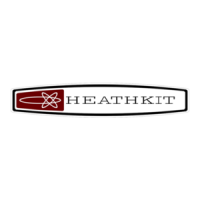a) History of the HW-101
By K8GNZ (8/2003)
The Heathkit HW-101 evolved out of several prior Heathkit models, namely the SB-100,
SB-101, SB-102, and the HW-100. To understand the history of the HW-101, one needs
to know a little about the history of these prior models and of the Heath Company in
general.
The Heath Company: The Heath Company was involved in building test equipment and
other devices prior to its entry into the amateur radio market. It was the entry and
success of Heath in the amateur radio market that made the Heath Company very
successful. After the onslaught of already-built off-shore equipment, the Heath
Company's amateur business dried up and is no longer a portion of what is left of the
Heath Company. The heyday for Heath was from the late 50's to the early 80's. At that
time, more hams used Heath equipment than any other brand and, needless to say,
since it was mostly self-constructed, Heath was instrumental in planting the technology
interest seed in many future engineers and technicians.
The AT-1 transmitter of the early 50's was the first Heathkit amateur product. (I had one
back then, although I didn't build it). It was followed by the hugely successful DX-100
transmitter, all 100 pounds of it! It was a plate-modulated AM/CW rig that used a pair of
6146 tube finals, just like the HW-101. Heath expanded the DX series in the late 50's
with the DX-20 CW transmitter, the DX-35 CW and screen-modulated phone
transmitter, and some others. (The DX-35 was the first Heathkit I built. It worked the first
time I plugged it in - lucky me). Heath had many other successful amateur rigs and
equipment in the late 50's and early 60's. Then, in the mid 60's, Heath came out with the
SB-100.
The SB-100: The Heathkit SB-100 was their first attempt at a "poor man's Collins"
transceiver, as it was called by the amateurs. The SB-100 looked a good bit like the
Collins KWM-2 transceiver, and the circuitry had many basic similarities. Collins was, in
case you don't know, regarded then (and perhaps still now) as the Cadillac of amateur
radio equipment brands. It was very good, and it was very expensive! Heath wanted to
compete against Collins, and the SB-100 was a good competitor since it could perform
about as well as a Collins (if built correctly) at a fraction of the price.
The SB-101 and SB-102: These models were improvements over the SB-100, and
included a 400 Hz CW filter selectable from the front panel, as well as other
improvements. They were produced from the late 60's to mid 70's.
HW & SB History revised 12/17/2021 Page 14

